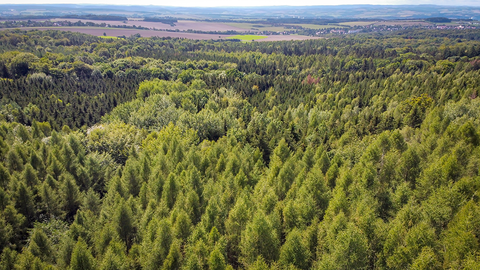How much forest is there?
Under natural conditions, around 98% of Central Europe would have been covered by different forest ecosystems from the beginning of the warm period around 9,000 BC to the present day. Only rocks, salt marshes, mountain peaks, deeper waters and moors would be free of forest. In fact, the proportion of woodland in large parts of Central Europe has been significantly lower for centuries. Since the Middle Ages, only between 15 and 30 % of the area of present-day Germany has been forested, with fluctuations. The proportion of woodland shrank considerably at times, as too much wood, fruit, litter for animal stables and soil was taken from the forests. The forest was unable to regrow and emergencies arose. The principle of sustainability is the consequence of an emergency situation from the 18th century.
In 2021, around 32% of Germany's 35.7 million hectares of land are forested. This corresponds to 11.4 million hectares of forest. Around 355,000 ha of this is left to natural development. This corresponds to 3.1 % of the German forest area. This figure is well below the target of 5 % already set for 2020. Conversely, this means that natural forest development will not be possible on around 99% of Germany's national territory in 2021.
Forests can also be classified and surveyed based on other characteristics, e.g. according to silviculture types and types of operation.
Next question: "How do we use forests?"
Back to the overview of "At home in the forest"

